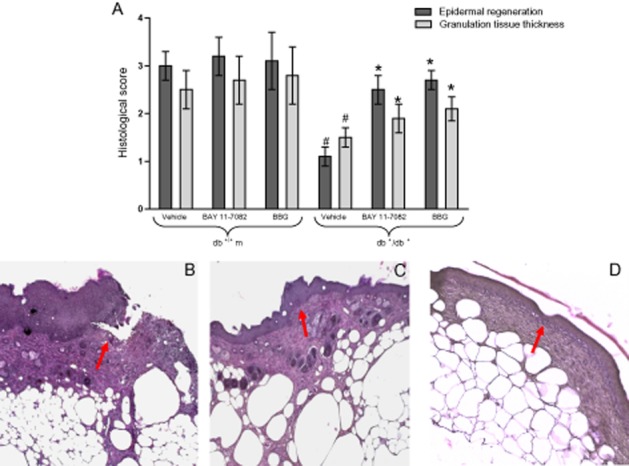Figure 4.

(A) Histological scores in wound samples, collected at 12 days, from either normoglycaemic (db+/m+) and diabetic mice (db+/db+) given either vehicle, or BAY 11-7082 (20 mg·kg−1 i.p.), or BBG (45.5 mg·kg−1 i.p.). Each bar represents the mean ± SD of seven animals. #P < 0.01 versus db+/m+; * P < 0.05 versus db+/db+ + vehicle. (B) Histological photomicrographs, haematoxylin-eosin stain, vehicle-treated diabetic (db+/db+) wounds. Incomplete re-epithelialization (see arrow), and poorly formed granulation tissue. (C) Histological photomicrographs, haematoxylin-eosin stain, BAY 11–7088 treated diabetic (db+/db+) wounds. Re-epithelialization is almost complete (see arrow), well-organized granulation tissue and no evidence of inflammation or oedema. (D) Histological photomicrographs, haematoxylin-eosin stain, BBG-treated diabetic (db+/db+) wounds. Re-epithelialization is complete (see arrow), the granulation tissue is well-organized and inflammation is absent.
